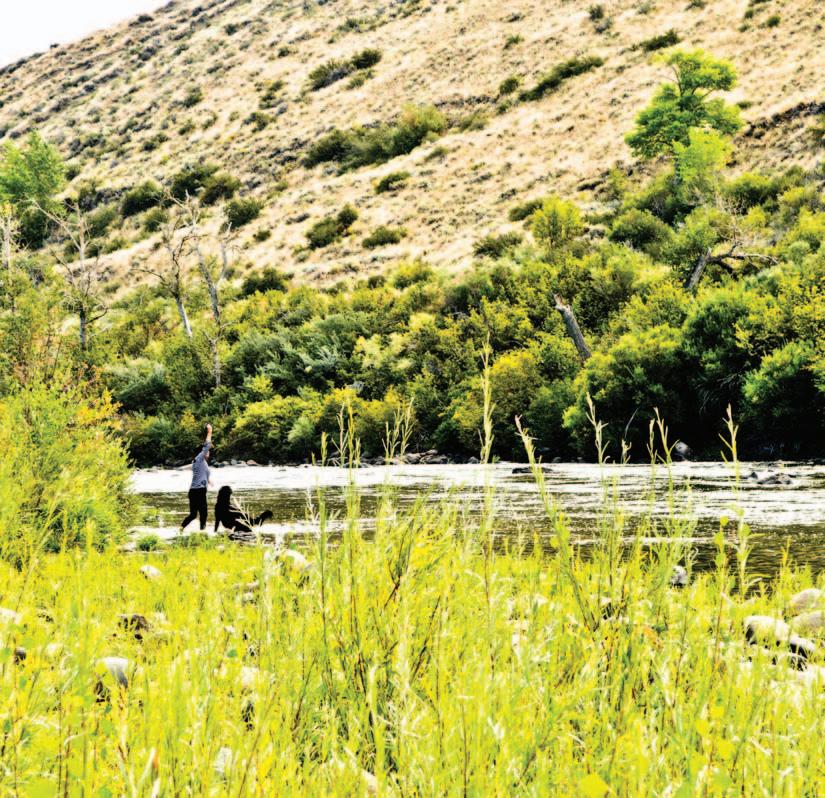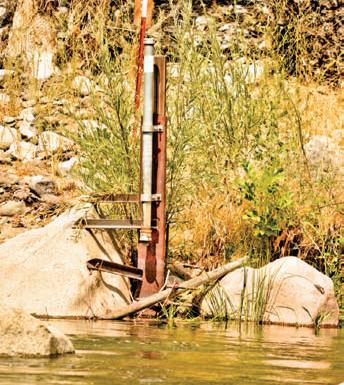
9 minute read
News
from Sept. 1, 2016
Cathy Woods sues
Cathy Woods, who as a Louisiana mental patient confessed to a Reno murder but was later cleared by DNA testing, has sued police in Reno and Shreveport, Louisiana. She was convicted of killing University of Nevada, Reno student Michelle Mitchell in 1976 (“The case goes on,” RN&R, March 12, 2015).
Advertisement
The lawsuit, which names four former Reno police officers, argues that Woods was in no condition in the Louisiana facility to consent to being questioned by police and that her confession and interrogations—which led to her conviction—were “not memorialized or written down in any way” and were not recorded.
At the time of her confession in 1979, DNA testing was not available. It did not become a common part of crime investigation until the mid-1980s. Last year, when Woods’ release was announced, officials said her confession not only hurt her, but it diverted the ongoing investigation. Washoe County District Attorney Chris Hicks said, “Investigations stopped into other people and began into Cathy Woods. … Cathy Woods was not on anybody’s radar until she brought it on herself.”
Pot tale of the Week
On Aug. 22, the Tahoe Daily Tribune ran a story about Incline Village prohibitionist Jason Guinasso. (The piece previously appeared in the North Lake Tahoe Bonanza.) The article carried this quote from Guinasso: “At the end of the day, when we just committed to the biggest tax increase toward education, now we’re legalizing marijuana to contribute to a lack of performance and addiction? … It impacts our ability to educate.”
The article also reported, “He [Guinasso] cites a study from Duke University that tells how a person’s IQ drops 8 percentage points by using marijuana.”
The Duke study Guinasso referenced was published Aug. 27, 2012 in the Proceedings of the National Academy of Sciences.
Part of the scientific method is reproducibility— repeating an experiment or study, either by the same researcher or an independent source, to determine if the same results can be duplicated. Had Guinasso followed up, he would have learned that, so far, no one has been able to duplicate the Duke results. In fact, a few months later, the same publication reported, “Although it would be too strong to say that the results have been discredited, the methodology is flawed and the causal inference drawn from the results premature.”
Subsequently, two much larger studies by University College of London—in October 2014 and January 2016— found no evidence of any link between lower IQ and marijuana use in the young.
Among other things, the subsequent research has found that the Duke study was flawed by a small sample of heavy users and because it did not allow for environmental factors associated with low socioeconomic status, mental illness, and use of other drugs such as tobacco and alcohol. The London studies both had larger groups of test subjects.
In any event, the issue has little to do with Nevada Question Two, which makes underage use of marijuana illegal at section two, lines D and E, but prohibitionists keep using children as a campaign argument because voters tend to react strongly to such tactics. –Dennis Myers
In Nevada, policy debates often center on the use of our known water supply. At Mayberry Park, a woman throws a ball into the river for her dog—a good use.
PHOTO/JERI CHADWELL-SINGLEY
Water ways
Academic and legislative work focuses on supply and snowpack
last June, the truckee Meadows Water Authority began using drought reserves from Boca Reservoir. It was the fourth year of drought in the state and the second consecutive year reserves were needed to feed the Truckee River. The region is still in drought, but 2016 has been a better one for water supplies in the Truckee Meadows—thanks in part to a healthier snowpack last winter and the December 2015 implementation of the Truckee River Operating Agreement, which was shortly followed by TMWA’s purchase of 50 percent of Donner Lake water rights from the Truckee-Carson Irrigation District. (The water authority already owned the other 50 percent.)
TMWA is expected to begin tapping into a small amount of drought reserves later this month to meet customer demand through October. But that’s not cause for alarm, at this point. A staff report by senior hydrologist Bill Hauck, presented during an Aug. 17 TMWA board meeting noted that even with some reserves slated for use, “TMWA should end up carrying over close to 40,000 acre-feet [one acre-foot represents 325,851 gallons] of upstream storage into 2017. This upstream storage will go a long way towards preparing the region for another dry year if that were to occur.”
While the present water supply forecast is encouraging, a recent study suggests “another dry year” might not be the region’s only concern. In July, the scientific journal Geophysical Research Letters published a study co-authored by University of Nevada, Reno ecohydrologist Adrian Harpold and researchers from the University of Colorado, Boulder. Their findings suggest a warming climate can lead to earlier, slower snowmelts—and this may reduce both streamflow and the amount of water reaching reservoirs.
“So snow holds a certain amount of coldness, and you have to overwhelm that amount of coldness for the snow to melt,” Harpold said.
He explained that when the snowpack is smaller during drought, it takes less to overwhelm its frigidity and initiate melting. If this occurs during the winter and early spring months, daylight is shorter and the sun’s angle is lower—which leads to slower melting. Larger snowpacks can persist into June or July, allowing hotter temperatures, longer days and the more direct angle of the sun to cause faster melt. A warming climate, however, increases the likelihood that large snowpacks will also be subject to earlier and slower melts. But why would this reduce the flow of water in streams and rivers?
“So we think the processes responsible for this sensitivity to snowmelt rate have to do with how water is stored and pushed deep into the subsurface under these different melt rates,” Harpold said. He explained that when snow melts slowly, the water is not pushed as deeply into the ground where it can be stored as groundwater or make its way into streams. Instead, more of it evaporates or is taken up by the roots of surrounding vegetation, and subsequently lost to evapotranspiration.
Harpold and his fellow researchers studied changing snowmelt rates in mountain ranges across the Western United States, including the Sierra Nevada. While the trends they observed were consistent, Harpold said determining the actual effect on streamflows is not so cut and dried.
“It’s not a unidirectional sort of change,” he said. “Places are likely to respond completely different.”
Factors that may influence a region’s sensitivity to snowmelt rates range from subsurface composition to vegetation root depth and even humidity, and Harpold said more research is needed to determine how different regions may be affected. In the meantime, he hopes for more dialogue between the scientific community, policy makers and the public. He recommends the non-profit environmental organization Protect Our Winters as one avenue for people looking to engage on climate issues. The group—comprised of winter sports athletes, enthusiasts and businesses in the industry—is engaged in
numerous climate education initiatives, as well as lobbying activities.
Water bills

In Nevada, the state with the driest climate, the dialogue often centers on the use of our known water supply. The peak season for water demand is drawing to a close. But with fewer than six months before the Nevada Legislature convenes for its 79th session, water issues remain front and center, presenting several matters for the public to keep its eye on in the coming months.
On the regional level, there’s the possible dissolution of the Western Regional Water Commission. The commission was created by the legislature in 2007 to bring together several Truckee Meadows government entities for the purpose of water planning and conservation. Among the duties tasked to the WRWC was exploring options for consolidating regional water utilities. In December 2014, Washoe County Water Resources and South Truckee Meadows General Improvement District were consolidated into TMWA. Having met this and several other goals for which it was created, the WRWC board of trustees asked its staff, in March, to look into the procedure and consequences of dissolution or of transferring its powers and duties to TMWA.
While the possibility was discussed again during the commission’s Aug. 17 board meeting, WRWC chair and Washoe County Commissioner Vaughn Hartung said he doesn’t believe there was much appetite among the trustees to move forward with dissolution, in part because of ongoing projects like an exploration of the potential use of drones for aerial cloud seeding.
It is, however, still possible that the WRWC may seek a legislator to introduce a bill to disband the commission during the upcoming legislative session. At a statewide level, the Legislative Commission’s Subcommittee to Study Water is of interest. The interim subcommittee held its last of six meetings on Aug. 26 and approved five bill draft requests (BDR) to send to the 2017 legislature, based on recommendations received from government agencies, organizations and citizen groups
“It’s not a around the state. One BDR pertains to funding for unidirectional cloud seeding operations. Another is aimed sort of change.” at establishing accurate accounting of the number of water rights Adrian Harpold that predate Nevada Ecohydrologist water statutes established in 1905, 1913 and 1939. A third would give the state engineer more flexibility in managing water use in areas where well withdrawals consistently exceed the perennial yield of groundwater basins. Before deciding on which recommendations to pursue, the committee members heard more than three hours of public comment—mostly from domestic well owners who believed, thanks in part to the circulation of an error-laden online petition, that the subcommittee was trying to reduce their water use rights by 75 percent and mandate the installation of water meters. Requiring water meters on “all users in the state” was one of the recommendations, but the subcommittee chose not to create a BDR from it. The proposal to curtail water use rights was aimed specifically at new wells in severely over-appropriated water basins and areas where pumping regularly exceeds basin yield—and a BDR will be created from it. A final BDR proposes to allow the state engineer to limit domestic well pumping to indoor use and the watering of outdoor pets and livestock during times of curtailment. Subcommittee chair Senator Pete Goicoechea, R-Eureka, tried to explain to angry citizens in attendance—many of whom suggested petitioning for recall of the subcommittee members—that the bills drafted would have to pass in the legislature before taking effect. “What this committee does, again, would only be a recommendation,” he said. “It’ll come back to the full legislature next spring. There’s nothing we put in place. I don’t think a lot of people understand that.” Ω

A depth gauge on the Truckee near Sutro Street is one of several in the valley that keep water officials informed.










